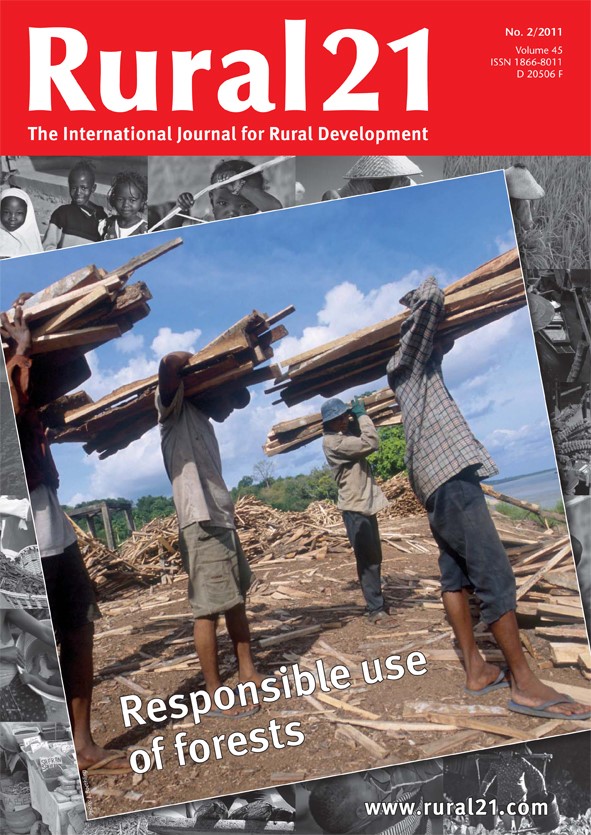Location
The international journal Rural 21 has dedicated more than 40 years to all topics surrounding rural development. Its ambition is to further those strategies and policies that strengthen rural areas of developing and newly industrialising countries and encourage their implementation. The journal addresses the complete range of relevant themes – from agriculture and fisheries via capacity building and education through to health and social security, energy supply and trade. Center-stage is always devoted to inquiring into how measures and strategies can contribute to global food security and to reducing poverty.
Rural 21 desires to further the dialogue between science and politics, the private sector, civil society and practitioners. Two platforms are designed for this purpose: Rural 21 in print is published four times a year, each issue highlighting a specific focus of rural development – this print edition is read in more than 150 countries. In parallel, Rural 21 online keeps the rural development community up to date on news and events, scientific findings and other print and online publications.
Rural 21 is published by DLG-Verlag GmbH in Frankfurt/Germany. Financial partners are BMZ (German Federal Ministry for Economic Cooperation and Development), GIZ (Deutsche Gesellschaft für Internationale Zusammenarbeit), DLG (German Agricultural Society – Deutsche Landwirtschaft-Gesellschaft), SDC (Swiss Agency for Development and Cooperation) and Helvetas Swiss Intercooperation.
The first issue of Rural 21 dates back to 1968. From 1974 to 2007, the journal was published in three languages entitled "entwicklung & ländlicher raum" / "agriculture & rural development" / "agriculture & développement rural". In 2008, the journal was relaunched as "Rural 21".
Members:
Resources
Displaying 161 - 165 of 319Green light for REDD+
Every year, 13 million hectares of forest are lost worldwide; that is an area the size of Austria and Switzerland combined. 90 percent of this deforestation involves tropical forests. Forest loss has devastating effects on the climate and is the source of between 15 and 20 percent of global greenhouse gas emissions. If global warming is to be kept below the critical threshold of two degrees Celsius, forest loss and degradation must be halted without delay
Computers in the cassava field
Cassava is the main staple crop in many African countries, but the crops are threatened by two major diseases, the cassava mosaic virus disease and cassava brown streak virus, which in the last years have destroyed almost 80 percent of cassava harvests in Africa.
Our precious resource
The importance of forests for climate change mitigation and species conservation, as water stores and oxygen producers, soil protectors and humus providers, is well known. However, over 13 million hectares of forest are lost each year, mainly in the tropics.
Fuelwood: a high-potential renewable resource!
In rural areas of many developing countries fuelwood constitutes the only energy source – often with negative impacts on humans and the environment. Wise management and modern technology can guarantee a sustainable use of this valuable resource, as some examples from Latin America demonstrate.
Carbon labels - pitfalls for developing countries?
Carbon labels for food are a new strategy of industrialised countries to reduce climate change-relevant gas emissions in agriculture. However, not every label includes the measurement of all emissions and may disadvantage and even exclude exporting farmers from developing countries. Policy-makers should reconsider this approach or at least focus on fair and non-discriminatory labels.


